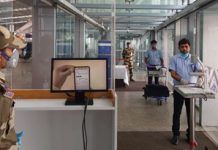The Gurugram police have decided to deploy personnel in three cordons covering all roads of the district to prevent criminal activities, senior officials said. The move comes after the police conducted a crime mapping exercise using data of the past five years and identified 150 areas/spots from where maximum cases of theft, burglary, and robberies were reported. The police officials said they have started analysing the spots through the web-based software “Crime Mapping Analytics and Predictive System (CMAPS)”, which accesses real-time data from the police control room (PCR).
“The outer cordon will have cops deployed at the borders connecting to other districts and states. Barricading will be done and check posts will be set up to avoid unwanted entry, and all suspicious vehicles will be checked. The inner cordon will be deployed at the vulnerable spots from where most of the street crimes such as snatching, robbery, and vehicle theft have been reported. The last cordon will keep vigil on dark spots and focus on crime against women,” KK Rao, Commissioner of Police, said.
At least 2,500 personnel will be deployed in the three layers to maintain law and order across the district, the officials said, adding that all wings, including traffic and crime investigation agency (CIA), have been assigned duties. Rao said Deputy Commissioner of Police (DCP), Assistant Commissioner of Police (ACP), inspectors, sub-inspectors, constables, special police officers and home guards will be deployed throughout the day.
The officials said one of the prime concerns is vehicle snatching and theft for which they have started keeping a close watch on parked vehicles. Also, the traffic police have been asked to supervise the parking lots and to ensure that no miscreants are active in the area.
The police commissioner said the crime data will be updated every three minutes and will reflect in the crime mapping.
“We will collect information from the police control room on the geospatial map of the city, which will enable the department to pinpoint the exact location of a crime. The crime teams will study the pattern of calls coming from a particular location. Suppose if there are too many burglary calls coming from an area which has many entry and exit points and less deployment of security guards, we can match those calls with past crimes in the area and understand if laxity of security is in any way responsible for this, and whether another crime is likely to occur there soon,” said Rao.
The police have also started geofencing for setting the digital boundaries of PCR vans and patrol bikes. This will help reduce response time and tackle criminal activities in the district, said the officials. Also, a centralised data bank of criminals, miscreants, and history sheeters has been prepared that will help the police nab the proclaimed offenders and bail jumpers, said the officials.








